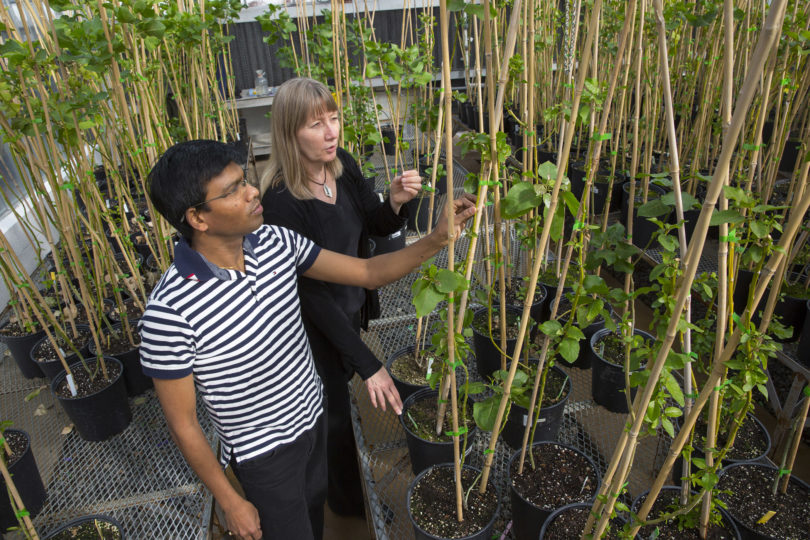UGA researchers have discovered that manipulation of a specific gene in a hardwood tree species not only makes it easier to break down the wood into fuel, but also significantly increases tree growth.
In a paper published recently in Biotechnology for Biofuels, the researchers describe how decreasing the expression of a gene called GAUT12.1 leads to a reduction in xylan and pectin, two major components of plant cell walls that make them resistant to the enzymes and chemicals used to extract the fermentable sugars used to create biofuels.
“This research gives us important clues about the genes that control plant structures and how we can manipulate them to our advantage,” said study co-author Debra Mohnen, a professor of biochemistry and molecular biology in the Franklin College of Arts and Sciences. “The difficulty of breaking down the complicated plant cell wall is a major obstacle to the cost-effective production of biofuels, and this discovery may pave the way for new techniques that make that process more economically viable.”
The researchers tested their hypothesis on a species of tree called Populus deltoides, more commonly known as the eastern cottonwood. Working together with colleagues in the BioEnergy Science Center, they created 11 transgenic trees in which GAUT12.1 was reduced by approximately 50 percent.
This tree species is particularly attractive to the biofuel industry because it grows relatively quickly and produces large quantities of biomass in a short period of time.
“Our experiments show that the trees we created were less recalcitrant, meaning that it would be easier to extract sugars from the plant cell walls,” said the study’s lead author Ajaya Biswal, an assistant research scientist in Mohnen’s lab. “But we were particularly happy to see how quickly these trees grew compared to what one would observe in the wild type.”
The plants they tested displayed between 12 and 52 percent increased plant height and between 12 and 44 percent larger stem diameter when compared to controls.
Faster growing plants would yield more biomass over a shorter period of time, making them more attractive to both growers and the biofuel industry, Mohnen said.
While the researchers emphasize that these are preliminary results, they and their colleagues in the BioEnergy Science Center already are preparing new experiments that will test their transgenic trees in different environments.
“We’ve already learned a lot from this process, but we are confident that we can expand and improve on our research to achieve even better biomass and understanding of how it is produced,” said Mohnen, who is also a part of UGA’s Complex Carbohydrate Research Center.
Their research project was conducted in partnership with the BioEnergy Science Center, one of three U.S. Department of Energy-funded research centers seeking new methods to overcome biomass recalcitrance.
The research team also partnered with ArborGen, a leading producer of tree seedling products and one of the largest providers of conventional and technology-enhanced seedlings for the forestry industry.








